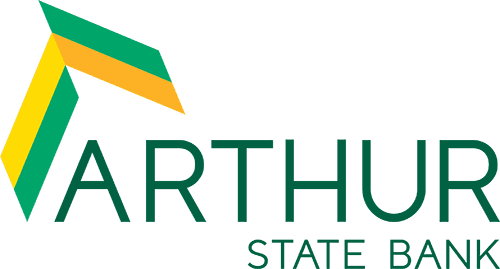For American consumers, credit cards are among the most commonly used tools in the financial tool kit. In fact, according to information from the U.S. Government Accountability Office, more than eight in 10 U.S. adults hold at least one credit card account.
And of course, there are a lot of good reasons credit cards are so popular among U.S. consumers. When used responsibly, credit cards can offer a broad range of benefits, including:
- Increased purchasing power
- Simplified bill payments and buying transactions
- Credit-boosting opportunities
- Purchase protections
- In many cases, the chance to earn rewards
Unfortunately, though, credit cards can come with a downside. When the debts they’re carrying are allowed to accumulate or their bills are otherwise not paid off promptly, they can lead to financial troubles — as exhibited by the fact that the average American consumer owes nearly $8,000 in credit card debt.
6 top tactics for paying down credit card debt
By taking more control of their spending and making a concerted effort to pay down their credit card debts consumers can eliminate their card balances and improve their financial well-being. And with March 21 being Credit Card Reduction Day, March is an excellent time to make plans to pay down any credit card debt you may be carrying.
Looking to eliminate your credit card debt? With a solid plan in place, it’s a goal that most of us can achieve. Consider these six top tactics that are widely viewed by experts to be among the best ways to pay off your credit cards:
- Use the debt snowball method — Focused on lowering the number of credit card balances you’re carrying as quickly as possible, this debt-payoff method is great for those who are likely to be inspired by the added motivation that can come with early wins. To get started, be sure to make at least the minimum payment required on each of your credit cards each billing cycle. Then, use any additional available funds to pay down your lowest credit card balance each month. Once that card’s balance has been zeroed out, be sure to celebrate your achievement. Then (after minimum payments are made) focus any additional funds available each month on paying down your next-lowest balance. Over time, this method should enable you to eliminate each of your credit card balances, one by one, starting with the lowest.
- Employ the debt avalanche method — This payoff method also focuses on paying off one credit card at a time, but instead of first targeting the card with the lowest balance, it starts with the card carrying the highest interest rate. Once again, you’ll start by ensuring that all your cards’ minimum payments are made each month. Then, you’ll devote any additional available funds to paying down the card with the highest annual percentage rate (APR). And once that credit card’s debt is paid off, you’ll move on to targeting the card with the next-highest interest rate until all of your credit card debts are eliminated. This method is especially well-suited to those who might be most motivated by money savings, as it can lead to a lower total amount paid thanks to its earlier elimination of higher-interest debt.
- Consider getting a balance transfer credit card — For those looking to put a pause on the interest they’re paying while they knock down their credit card debt, applying for a balance transfer credit card could be worth considering. These cards often offer a very low or even a 0% interest rate, typically for an introductory promotional period lasting 12 to 21 months. While the interest kicks back in once the promotional period is over, in the meantime, the cardholder can transfer all of his or her card balances to this one card, and then pay down his or her total credit card debt without any additional interest accruing. And by consolidating all the cardholder’s credit card balances onto a single card, this tactic can also simplify monthly payments.
- Secure a debt consolidation loan — A personal loan providing funds that can be used to pay off all of your credit card debts at once, a debt consolidation loan can often enable the borrower to replace a number of typically higher-interest credit card debts with a single, typically lower-interest loan to repay. (Interest rates on a debt consolidation loan can vary greatly, though, depending on the loan’s terms, the borrower’s credit score, and other factors.) The trade-off can come with some reduced flexibility, though. Unlike credit cards, which typically only require a relatively low minimum monthly payment, the loan will usually have a set monthly repayment schedule with a fixed, typically higher amount owed each month. The total amount of interest charges avoided by taking this route can be substantial, though.
- Dial back your discretionary spending — Of course, one of the best ways to have more money for paying down debt is to spend less on non-vital purchases, otherwise known as “discretionary spending.” Take a close look at your monthly spending habits to try to identify any savings opportunities you might be able to take advantage of, then put that money toward eliminating your credit card debt.
Common ways to save here include:
– doing less dining out and instead cooking at home
– making fewer visits to the coffee shop and brewing your own instead
– opting for a “staycation” in place of a more expensive, travel-required vacation
– identifying and canceling any streaming services you may not use regularlyAny lifestyle changes you choose to make here don’t have to be permanent — you can revisit your choices and readjust once you’ve successfully achieved your debt-reduction goals.
- Consider a debt management plan — For those in a particularly troubling credit situation or who simply can’t seem to keep up with debt payments on their own, a debt management plan may be worth considering. This involves getting professional financial help from a credit counselor, a person trained to closely examine customers’ finances, create a plan for debt repayment, and chart a course to achieving financial well-being. In some cases, a credit counselor may even try to work with debtors to renegotiate interest rates and payment schedules — and depending on the consumer’s financial situation, the plan can take years to complete. But with a professional’s help, the services can often set consumers on the right course to achieving their financial goals.
Whatever route you choose to take, paying off your credit card debt is a great way to elevate your credit score and boost your overall financial well-being — and it can help you free up funds for other financial goals and investments. Make the most of March and Credit Card Reduction Day by using them as inspiration to eliminate your credit card debts!
Proudly serving South Carolina since 1933, Arthur State Bank offers accounts and services to meet a variety of financial needs. To help you achieve all your financial goals, the bank offers in-person service as well as a range of convenient digital solutions. To learn how Arthur State Bank can help you with banking needs ranging from checking and savings to retirement accounts, mortgages, other personal loans, and more, visit arthurstatebank.com.






















